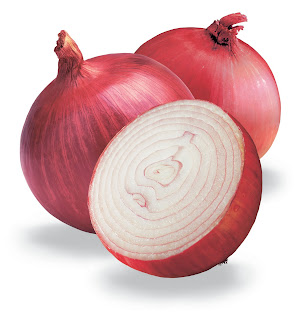
Alliums. I’m not sure I even knew what that word meant until I learned one of my clients had an allergy to everything in the allium family. Since I’d have to get creative to develop recipes without alliums, I figured I’d better learn exactly what they were!
It turns out that alliums are the botanical name for the members of the onion family which includes onions, leeks, shallots, garlic, chives, scallions and apparently about 700 other species. After I finished lamenting the flavor we’d be sacrificing by NOT including these in the meals my client and I would concoct, I started to think about exactly why I was so attached to all-things-onion. So here goes…an ode to alliums.
Top 5 things I love about alliums:
1 – They are the best aromatic in the gastronomic world.
2 – They add substance and flavor without adding fat or (significant) calories.
3 – They add depth to dishes and can be used choicefully to evoke flavor nuances.
4 – They can be used raw OR cooked and taste completely different each way.
5 – They have a long shelf life and are easy to keep on hand.
Here’s a closer look at the merits of each of these popular members of the allium family…
Onions
As both a vegetable AND a flavoring agent, this is the staple allium in most kitchens. Fresh, these are delicate enough to be sliced onto a sandwich or burger. Storage onions (the kind with papery skins you see in grocery stores in bulk or net bags) have a somewhat stronger flavor but a really long shelf life when properly stored. They form the basis for many savory dishes like soups, stews, casseroles, and stir frys. Onions have a heavier, earthier flavor profile than their counterparts which follow, less of a bitey fresh taste, so they don’t lend themselves AS well to fresh dishes. Of the storage varieties, yellow onions are the most pungent, followed by white, spanish, bermuda, red, pearl and vidalia. When I think about how I’d use these
Yellow – basic all purpose onion
White – often used in Mexican cooking
Spanish or Bermuda – great in creamy soups and sauces because of texture
Red – beautiful color and mild flavor so good raw in salads or sliced on burgers or sandwiches
Pearl – good for pickling (due to size) or added whole to stews (cooks quickly)
Vidalia – very juicy and much sweeter than others – good both raw and cooked (*this is MY go-to variety)
Scallions (aka Green Onions)
Generally eaten raw in salads, these can also be cooked and often are used in Asian stir frys or Mexican dishes as a garnish. They have a mild, delicate flavor in both raw and cooked dishes and can be used when onion would be overpowering.
Garlic
This is by far the most pungent member of the onion family but the flavor mellows considerably when cooked vs. eaten raw. A slow-cooked dish with garlic (or even a whole head of garlic roasted unpeeled and then squeezed out and spread on bread) can be much sweeter and less “garlicky” than anything made with raw garlic. The fresher the garlic is (i.e. harvested in the spring when in season), the subtler the flavor is. Garlic is an essential flavoring in nearly all ethnic cuisines.
Shallots
Shallots are intense in flavor but without being overly pungent. I describe the flavor as “bitey” or “bracing” and love to use diced fresh shallots in salads or homemade salad dressings or in compound butter. When sauteed, shallot flavor mellows considerably. I like to saute them with mushrooms in a little olive oil and butter and toss with steamed green beans or other green vegetables. I love the complexity they add to sauces when sauteed. I also use them in the base for many of my pasta sauces and risottos as they pair beautifully with white wine.
Leeks
Leeks are far more delicate in taste than onions and make a more gentle flavoring for soups. They are famously paired with potato in potato-leek soup but are also quite delicious as a vegetable on their own…simmered in butter especially!
Chives
While technically an allium, chives are most often used as an herb. They have a fine, delicate flavor that pairs well with eggs (in an omelet especially) or potatoes (on top of baked potato or mixed into mashed potatoes or in potato salad!). They make a beautiful fresh garnish for pureed soups or cooked vegetables.
So there you have it…an ode to alliums! As for the client with the allergy? We’re working on ways to amp up flavor WITHOUT these precious gems…I’ll keep you posted on our experiments!
